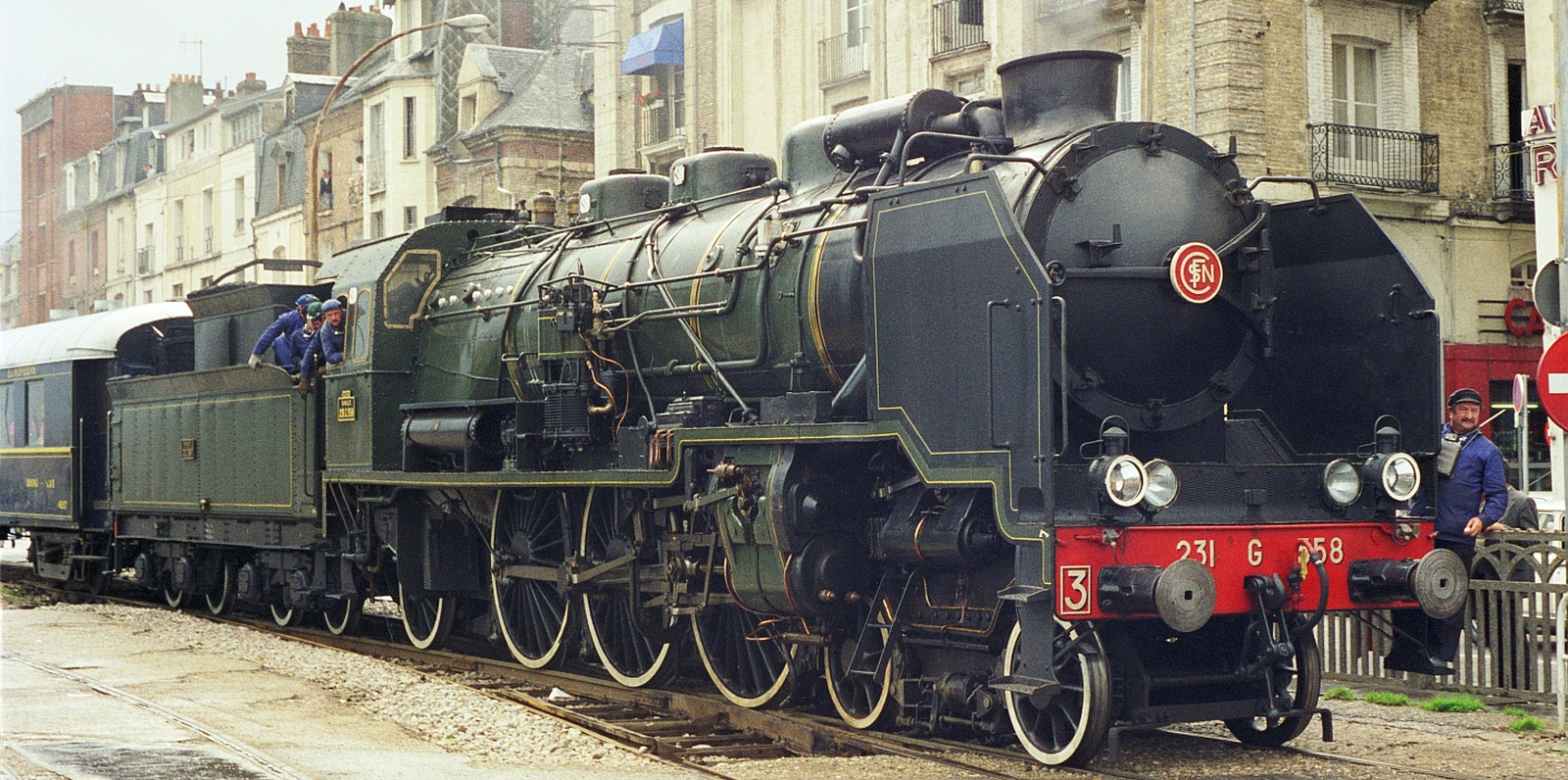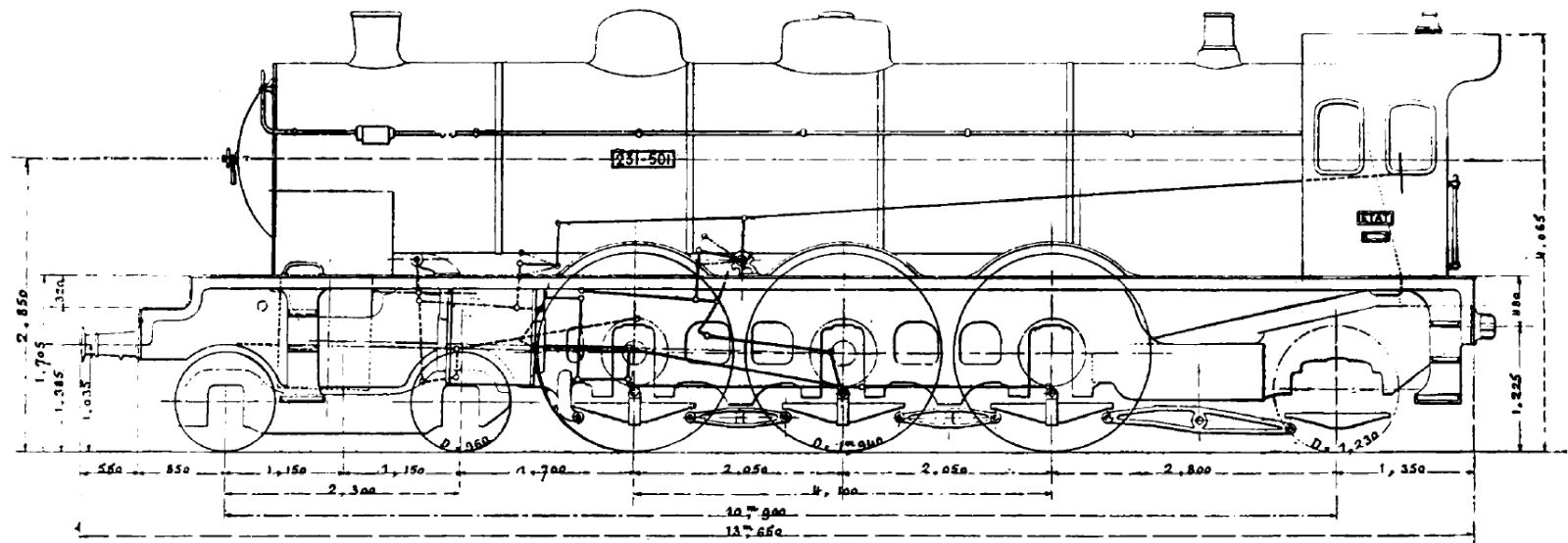As a successor to the Pacific locomotives of the series 231-011 to 060, the État had the first series of locomotives built from 1914, which were later to bear the numbers 231-501 to 783. The new locomotives also received a four-cylinder compound engine, but were also operated with superheated steam. The first series comprised ten locomotives, of which only six were delivered when the Germans marched into Lille. The other four locomotives were brought to Germany after completion. Other series were built by different manufacturers, including the North British Locomotive Company.

SNCF 231 G No. 558 in September 1986 at Dieppe-Maritime
Didier Duforest 
When they were delivered, the locomotives already corresponded to the latest state of the art, which was also found in other French express locomotives. These included an engine of the Du Bousquet-De Glehn type, in which the high-pressure cylinders were located on the outside and pushed far to the rear because they drove the middle coupled axle. Meanwhile, the low-pressure cylinders were on the inside, driving the first coupled axle. In addition, a cloverleaf-shaped blast pipe and a tender with a scooping device for catching water at full speed were used. Between 1933 and 1949 the locomotives were modernized in various forms, resulting in a total of six types. The changes affected different forms of valve gear, but some were also provided with feedwater heaters or a longer smokebox.

Schematic drawing with dimensions
Locomotive Magazine. June 1916
Among the total of 283 locomotives that had been manufactured until 1922 were some designated as “Pacific TP” that had been delivered to the PO and the Alsatian Railway during the war as relief work. When the SNCF was founded, these were designated 231 C, D, F, G, H and J, together with the six designs delivered to the État. After some lines around Paris had been electrified from 1937, the area of application was reduced. After modern diesel locomotives had also taken over the express service on non-electrified routes, the last journey of a 231 G took place in September 1968. One of these 231 Gs is still operational today.